We’ve just had a fun few days in Quime, a small town in the mountains that is well and truly off the tourist trail. I’m writing from a smelly bus heading to La Paz, our next destination.
Quime isn’t listed in any guidebooks – some friends of ours found it on WikiTravel and thought it sounded like fun, an escape to the countryside for hiking and home-cooked food.
Getting there was a bit of a challenge, requiring us to get our bus from Sucre to La Paz to stop at a small town at 4:30 in the morning and let us and (after some insistence on our part) our bags off. The Bolivian altiplano is at altitude, and its vast planes are notoriously cold, so we had a slightly chilly few hours sitting on a wall next to the only open shop playing cards and waiting for sunrise and feeling to return to our hands. It was then a short two hour shared taxi tide (£2.50) to the town, including a half hour wait while bulldozers remade the mud road on the mountainside before us (road works Bolivian-style!). After a 20 minute uphill slog we finally made it to the guesthouse where our friends were also staying, just in time for breakfast!
The town itself is a ramshackle set of mud brick and red brick buildings, with a couple of small squares and a sewage-laden river running through the middle. A recent resurgence in Tungsten mining has apparently meant it has doubled in size to about 5,000 in the past few years.
The five of us were the only white tourists around, necessitating much staring from the local kids, and warm calls of ‘buenos dias’ from their parents as we wandered round. Our host Marco came here from Alaska 30 years ago to study moss with funding from National Geographic, fell in love with the place and never left. Over that time, he’s built his house overlooking the town and valley, using pre-inca techniques including the first arches in any local architecture for generations, and now with various guest rooms to welcome travellers passing through. It was very much being in somebody’s home, and a lovely break from hostel after hostel.
On the first day, we hiked up a river with a machete in hand to cut through the undergrowth and find a suitable spot for Marco to set up some stone huts as part of an eco-reserve he’s working on. On the way, we could see in the distance the ‘Devil’s Slide’, a 1km high landslide of red rock that has been seemingly impossibly sliding downhill for years, kicking up swirls of dust as it goes.
Yesterday, I headed off for a full day’s hiking with our friend Simon (yes, a confusing name; he’s also a computer programmer from England!). We’d heard about the Naranjani glacial lake up in the hills above town, and fancied a bit of an adventure to see the glacier caving off into the water. After wading through an ice-cold river and following the trail up a hillside past landslides, we reached the lake, with a couple of ruined stone buildings we think were once forts perched on a ridge overlooking the valley below. Unfortunately, as we were to be told later, climate change has long since melted the glacier, so just the lake was left, with peaks towering around it.
The weather unfortunately was fairly cloudy, and as we kept on up the trail, we found ourselves in them, limiting the views and our visibility for finding a different route back. High up in a gully we came across an abandoned cave which we think was once carved out as a test mine. We pushed on up, and eventually reached the end of a canyon between two rock faces, where we could go no further. Our GPS told us we were at 4850m, some 1.7km above the road were we’d started!
It’s no wonder that our host had originally come here to study the mosses; we were amazed at the variety of vegetation on the apparently barren hillside. Lichens cling to rocks in vivid reds and a brilliant white so strong we initially thought it was snow. The ground is covered with a furry bed of greeny-yellow moss that comes off in clumps as you step and slip on it, and strangest of all are the pineapple-like plants growing in exposed spots between the rocks. We even found stinging nettles, perhaps a reminder that this damp, cold climate isn’t really too dissimilar to back home!
Simon
- Roadworks in progress!
- Walking into Quime
- Elena crossing a bridge
- A crazy cactus
- Some colour!
- Four hikers with Quime behind
- Local woman in traditional dress
- Simon wading the river – it was freezing cold!
- An old mining tunnel
- A canyon near the peak of the mountain
- OK, so perhaps this was slightly posed and there wasn’t all that much of a drop…
- You can see the road we started from, 1.7km below
- Lichen making the rocks bright red
- On the way back into town
- Que bonito! Cut by Simon (Barrow)
- The group of us, and Marco, the hostel owner
- Four of us squashed into the back of a taxi

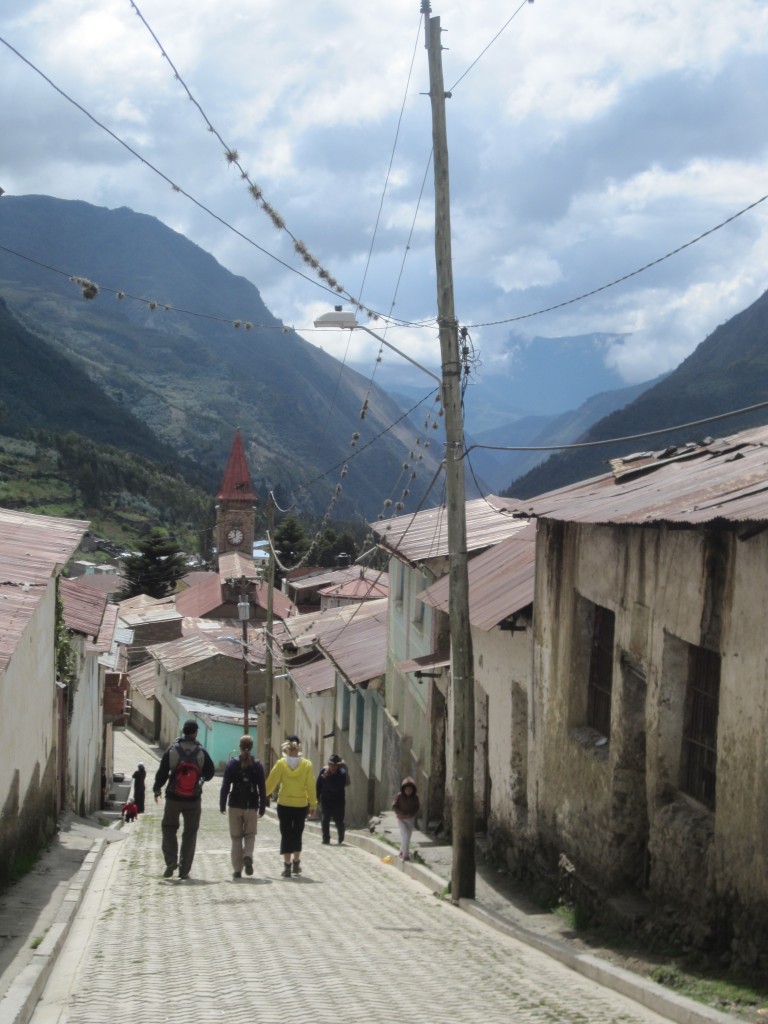
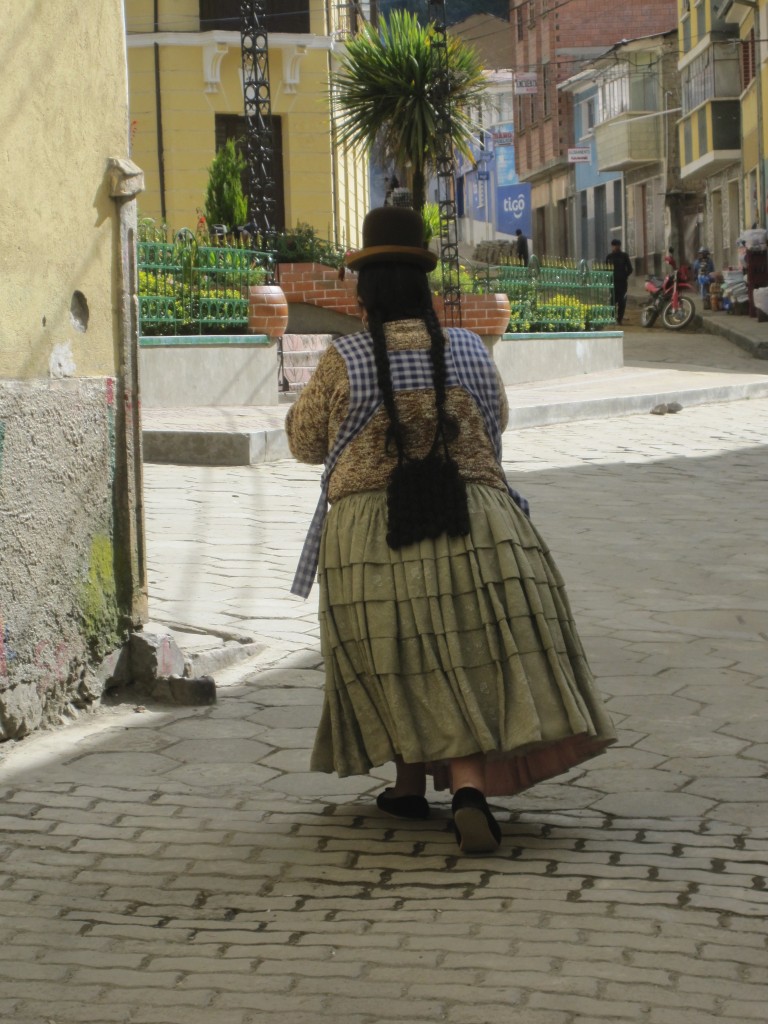

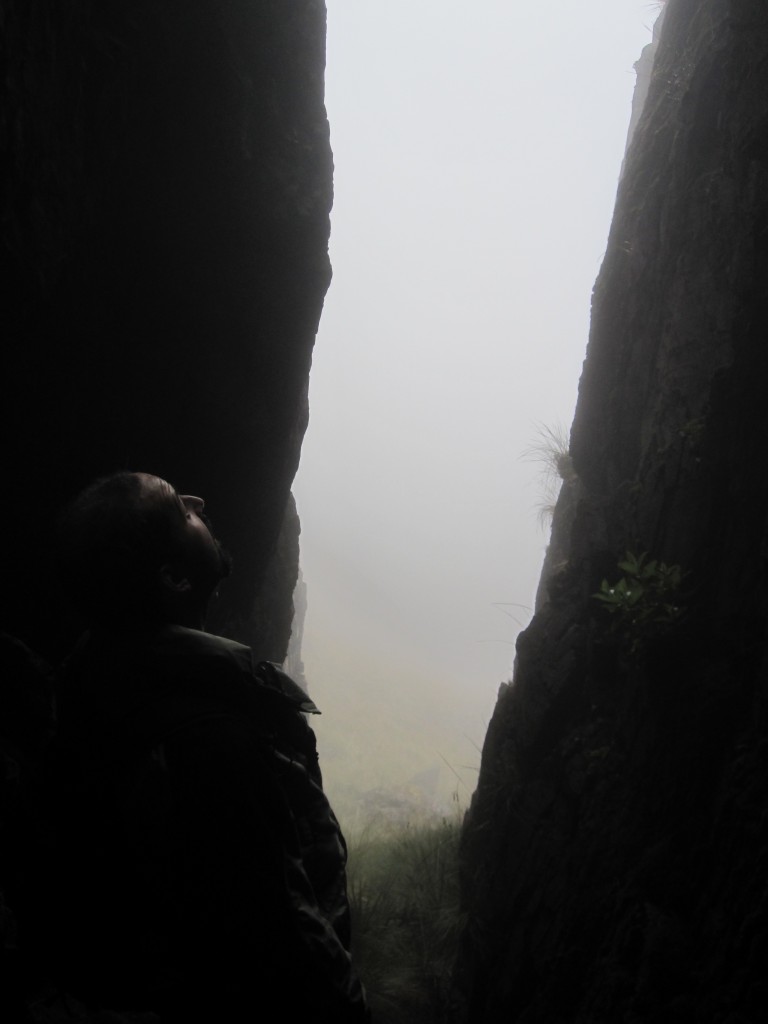
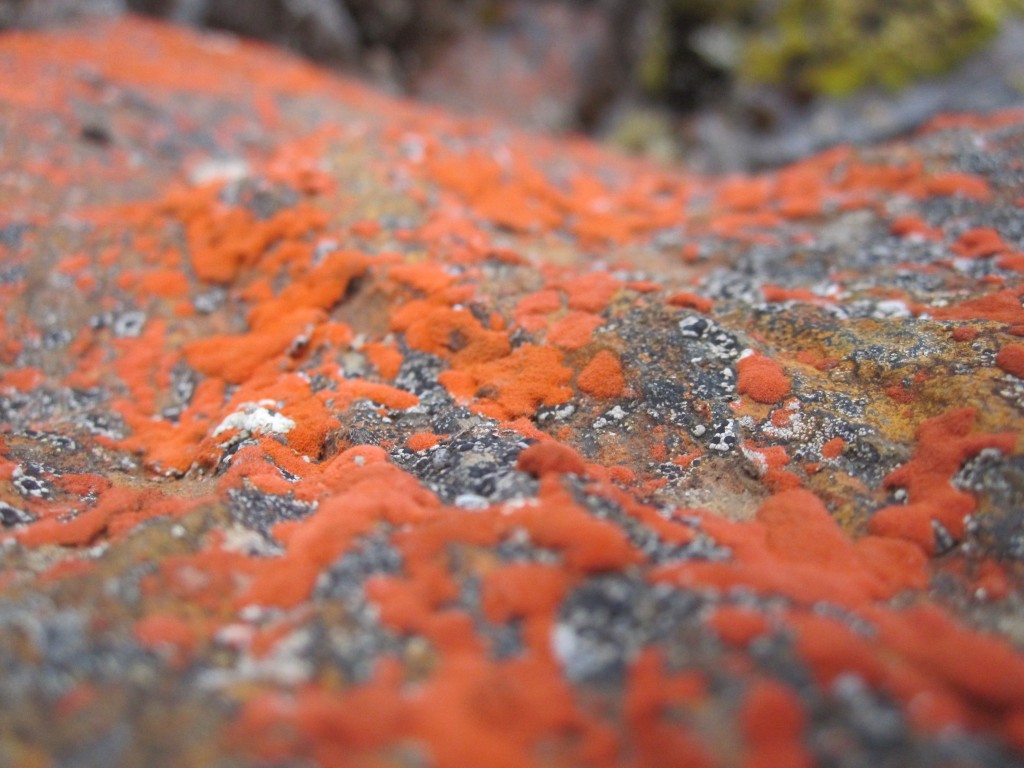
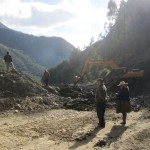
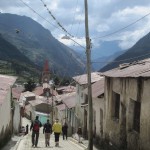
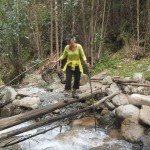
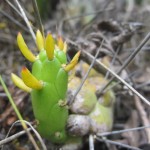
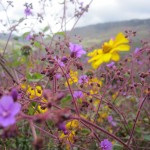
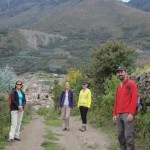
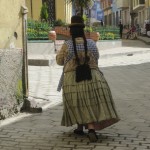
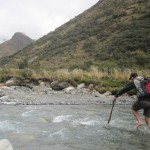
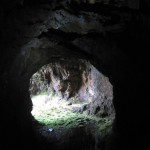
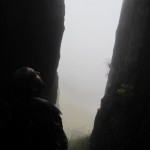
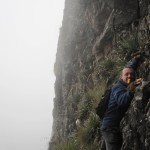

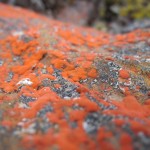
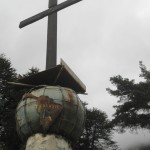
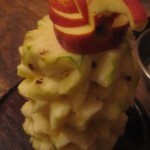

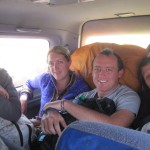
Hey interesting review…. the awful buses, well hat is why I suggest leaving on the minivans from the Alameda to Conani and then catch a comfy big bus to your destination.
I am showing the mayor’s office your comment on the “sewage-laden river”. I have been after them for years to clean it up (it is not sewage, its refuse).
Thanks for staying at my house and hope you have a good trip.